Sarkhan Unbroken is a great card, but as characters go, he’s kind of a jackass. The Khans of Tarkir had established a fairly balanced world in which there
was a diversity of tribal governments, and Sarkhan went back into the past and screwed it all up just so that a plane that he hasn’t lived on in years
could be overrun by a creature type that’s found a claw-hold in every other plane in existence. When he didn’t go back in time, Tasigur, the Golden Fang,
Alesha, Who Smiles at Death, and their other three Khan friends triumphed in a hard-fought battle against the draconic menace. But he went back and put his
thumb on the scale, and now we’re left in the darkest timeline: the one in which the colonizing forces win.
I mean, if I have a choice between a government of the people, even if that government is run by warlords, and a government of evil alien overlords, I know
who I root for. I root for Alesha, Who Smiles at Death. I root for a world where Narset Transcendent suppresses her spark for the good of her people, and
where Sidisi governs the living, and is not one of the dead.
When Alesha, Who Smiles at Death was first spoiled,I wrote a fair bit about her in my othercolumn. I’m a fan, and my only regret was that I didn’t get an opportunity to do a Dear Azami column on her.
This week’s submitter has cleansed that regret.
Take it away, Aeryn!
|
I am an avid reader of the column and this is my first time I’ve tried to make a deck that is personally me and not a tweak of something I’ve found on the
My win conditions other than going for pure aggro are bringing Wall of Blood out of the graveyard with Alesha, paying enough life to make it huge, then
I’m not on a strict budget, but my playgroup, being people who live on a budget, try not to play with cards that greatly exceed $15, so I want to try to The list: 1 Godsend 1 Sol Ring 1 Mortify 3 Mountain 3 Swamp 3 Plains |
Going into this build I knew I wanted to cut back on the Omnath, Locus of Mana hate. I’ve got a friend who plays one of those bonkers Omnath decks, so I
respect that it might be a reasonable reaction to one of the most dominant mono-green Commanders, but I’d rather be proactive than reactive any day of the
week.
Anyway, I’ve found the best way to deal with those overwhelmingly powerful decks is to turn the table against them. If they’re clearly the immediate
threat, they’re going to be ending more games than just yours. It’s a little more complicated when you’re running aggro decks since you’re going to look
more aggressive out the door, as opposed to mono-green decks which have a slow burn before they explode, but in my experience the best way to handle that
is to focus your aggro on the green deck to show your compatriots that you’re willing to get some skin in the game.
Just in case, though, I added in some more removal. You’ll see. And hopefully you’ll like what you see, too!
Allosaurus Rider
Out
(4):
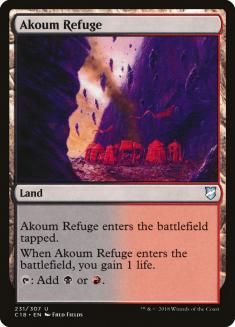

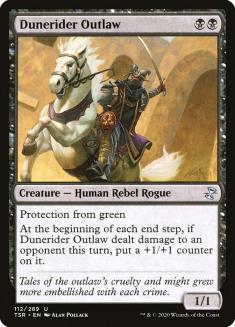
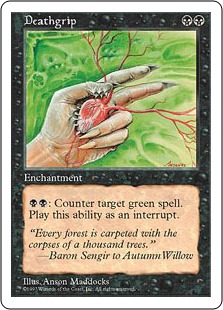

In
(4):
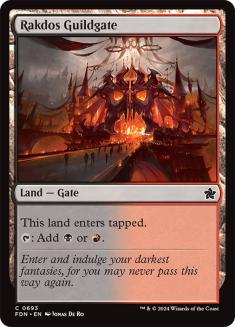
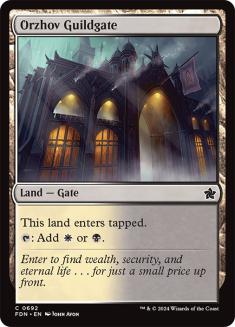
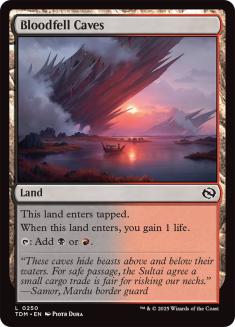
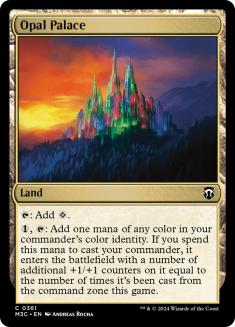

To start, I wanted to up your land count, which gave me a good opportunity to make use of those anti-Omnath slots. The worst thing that can happen to a
combat commander is for you to stumble on mana, and that’s a risk when you drop below 37 lands. In general, I’m more of a fan of running 38, but in an
aggro deck with a couple of different ways to get more lands on the battlefield, 37 seemed sufficient.
And running narrow colorhosers like Deathgrip and Dunerider Outlaw may have been a necessity, but it’s rarely fun for anyone, particularly the non-Omnath
decks who are going to be nailed by the ancillary hate.
In their place, I completed the cycle of guildgates. I prefer clean cycles in my decks, and that’s the main reason why I replaced Akoum Refuge with the
functionally equivalent Bloodfell Caves. If you’ve got a higher tolerance for that specific type of disorder, feel free to ignore that particular change.
Finally, I added in a utility land that can double as a trip-land in a pinch. Opal Palace has been one of the unexpected surprises from the Commander
products. When I first looked at it I undervalued the ability, but being able to have Alesha, Who Smiles at Death come out as a 4/3 or a 5/4 keeps her
relevant into the lategame.
I felt weird cutting the basic, especially with some of the cards I added later in the process, but everyone finds their own balance when it comes to
manabases. My version of Alesha, Who Smiles at Death is running sixteen basics, but you should be able to get by with half that.
If you should ever do a major revamp of your manabase, I have a few suggestions. Alesha, Who Smiles at Death is the type of commander who might actually
net you mana off Crypt of Agadeem. Similarly, Bojuka Bog is usually a strong inclusion, although it’s definitely not worth cutting a basic land for it
here. In general, I’ve been enjoying Flamekin Village, especially in a deck like this. Adding a RR kicker to give your creatures haste is usually strong,
and it’s particularly good when your commander needs to swing to trigger. Finally, I like both Slayer’s Stronghold and Vault of the Archangel in a deck
like this. However, you’re already pretty tight in the land slots, and you’re going to be the one who has the best sense of what you want your manabase to
do and what you can do without.
I feel that manabases, more than any other element of a deck, really speak to a person’s play style. Since it sucks to have your lands blown up, and most
decks only run one or two ways to handle an out-of-control landbase, you have to consider the level of attention you’re willing to draw to your manabase.
If the choice is between an opponent taking out someone else’s Cabal Coffers or killing a powerful spell land, you really don’t want them to seriously
consider going after you.
Slag Fiend
Out
(1):
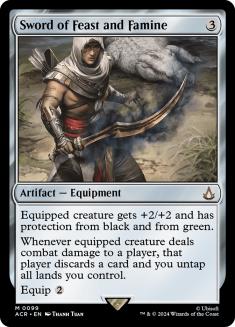

In
(3):
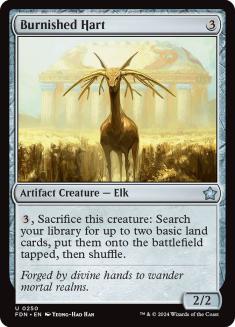
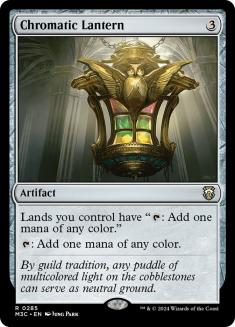
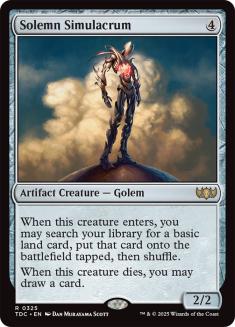

Alesha, Who Smiles at Death can be a more mana-hungry commander than you’d expect her to be. She’s relatively fragile, always in the red zone, and her
ability costs two mana per activation. As such, I buffed up your artifact mana a bit by adding Chromatic Lantern. Chromatic Lantern is one of the most
convenient cards for a Commander player since it means you get to stop paying attention to how you’re tapping your mana. I recognize that tapping your mana
correctly is a major part of playing high-level Magic: the Gathering, but if you want to divert your attention from the game to the conversation you’re
having over the game, it’s really nice to not have to worry about whether or not you’ve tapped too many Plains.
Burnished Hart and Solemn Simulacrum are the primary reasons I was reticent to cut your ninth basic land. In an optimal world, I think you’d be running
even more than that since these cards make for a very powerful ramp engine when partnered with Alesha, Who Smiles at Death. It’s amusing, because in many
decks people will pop your Solemn Simulacrum with no hesitation whatsoever, but in an Alesha build they’re much more willing to let the damage through. If
you do end up revamping your land situation, it’s worth considering both of these cards when you figure out how many basics work for you.
Finally, I cut Sword of Feast and Famine. I get that this is one of those anti-Omnath, Locus of Mana cards, but as both a card over $15 and a repeated
discard engine, it’s a little frustrating to see on the table. I just am so over the Swords in Commander. They’re powerful but flat, and I don’t think they
improve anyone’s play experience.
Cognivore
Out
(9):
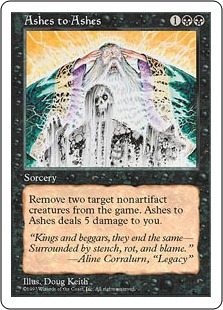
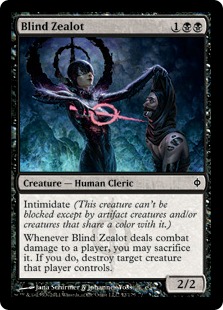
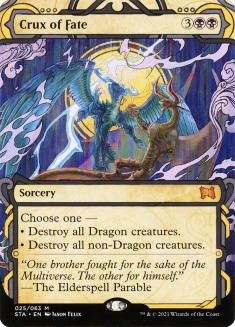
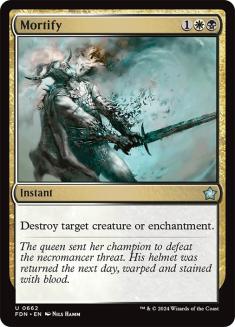
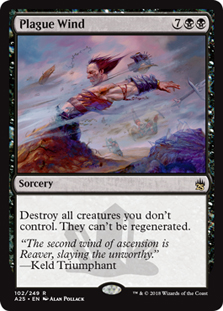
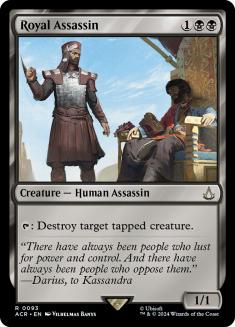
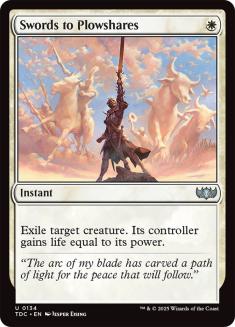
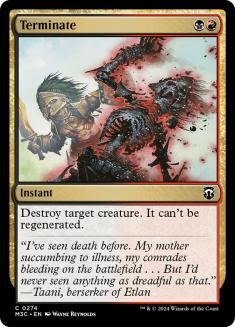
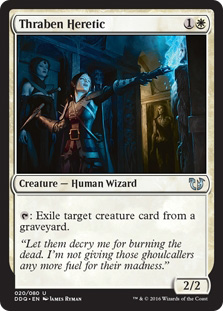

In
(5):
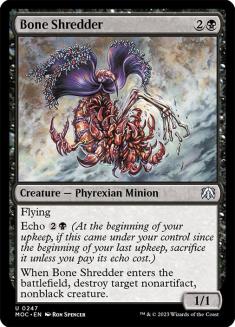
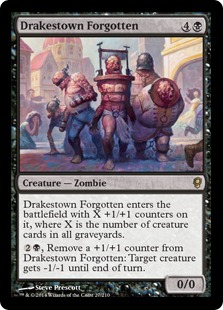
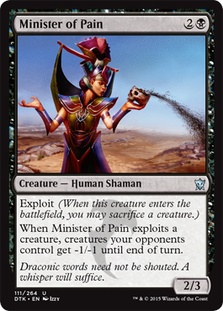
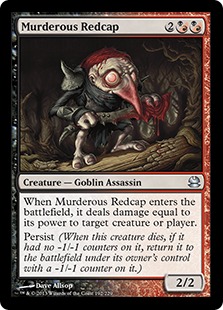


In general, I have a preference for removal that comes attached to a body. This preference becomes a rule in a deck like Alesha, Who Smiles at Death. Even
with Anarchist (which I cut later in the process), you have no way to recur instants like Swords to Plowshares, Mortify, and Terminate. They’re cards worth
playing if you’re ever doing Stoneforge Mystic shenanigans with Sunforger, but, particularly in the Mardu colors, Commander is not the format where
one-for-one removal spells shine.
Leave that for the Adrian Sullivans of the Standard world (who had a particularly nice and well-deserved run with Silumgar Control at this past weekend’s
Pro Tour Dragons of Tarkir).
It’s not just the one-for-ones that I cut, though; I also cut Plague Wind and Crux of Fate, albeit for different reasons. Plague Wind is too expensive to
be readily played, and I dislike those effects in aggro decks. I basically hate spells that say “I win the game” in Commander, and Overrun effects are
usually in that category. Plague Wind (and In Garruk’s Wake) are both Overrun effects because they clear the way for your creatures to bash in, and the
elimination of all resistance often allows for more damage than +3/+3 and trample.
Crux of Fate just seems situational to me. I mean, you’re not playing Dragons, so unless you know that you have to be watching out for specific draconic
players, who are so dangerous that it’s worth loading a chamber with a silver bullet, you’re left with a card that’s usually going to be set to
non-Dragons. That’s a recipe for leaving other people with threats on the board, and I’m not a fan of that one. If you really want to have a controllable
Wrath of God effect that can leave your team on the table, you have access to Austere Command. It’s basically the best possible asymmetrical sweeper in the
format, and you’re playing the right colors to take full advantage of its strength.
Royal Assassin and Thraben Heretic both ended up getting cut because they have a tap ability, and Alesha, Who Smiles at Death reanimates your fallen tapped
and attacking. Perhaps if you had some sort of Fervor/Amulet of Vigor combo it’d be more worth going deep on the tap effects, but as is they both offer
options you can get more reasonably elsewhere. For example, if you really feel like you need graveyard hate for your local meta, Withered Wretch is better
than Thraben Heretic. Especially after I diluted the Human tribal subtheme such that I even cut Xathrid Necromancer. In the end, though, I felt like you
were probably fine without the Zombie Cleric, but my meta’s forgiving that way.
Blind Zealot was on the fence, but I ended up cutting it because I wasn’t a huge fan of the demand that it be swinging at the player whose creature you
want to kill. Intimidate is often stymied in Commander, where artifact creatures make strong showings in almost every deck, and where Zombie tokens are
often protecting the very creatures you want to kill.
I brought in a couple of lethal Mulldrifters to make up for my cuts. Bone Shredder, for example, is capable of killing fewer creatures than Blind Zealot.
It’s the difference between Terror and Murderous Cut. But! Bone Shredder also self-executes, allowing for easier recursion, and it has better evasion. This
may not seem relevant given its base stats, but there are a fair number of anthem effects in the deck. Plus, you may need to pay the echo and keep it
around. You don’t get that choice with Blind Zealot. But the real reason I made this switch was because an enters-the-battlefield trigger is stronger than
a deals-combat-damage-to-a-player trigger. Bone Shredder can clear out blockers. Blind Zealot can’t.
In bringing in Murderous Redcap I unintentionally added a combo kill to your deck, albeit not one you’re necessarily going to be drawing into all that
often. It turns out that persist is very good with Cathars’ Crusade. With a free sacrifice outlet like Goblin Bombardment, that’s just good game (unless
someone else has graveyard or enchantment removal). I added it in though because it’s actually just a strong card in an Alesha, Who Smiles at Death deck.
Even if it can’t kill a creature on its own, you can often point it at the creature who beats Alesha in combat, thus limiting their ability to block your
first-striking commander. And barring that, you can just send the damage to their face. Don’t forget, though, cards like Dictate of Heliod get factored in
when you’re determining how much damage the Redcap can do.
Minister of Pain is an interesting card I added in because it’s good against tokens and mana dorks. In general, exploit is a really good ability in an
Alesha deck because it offers a free sacrifice of a creature you might want binned. With Alesha, you can do fun things like drop Minister of Pain, sac it
to itself, and then swing with Alesha bringing back Minister of Pain for a -2/-2 sweep of your opponents’ creatures. Even if that doesn’t kill everything,
it makes blocking Alesha, Who Smiles at Death a significantly trickier proposition.
Necrotic Sliver mimics the functionality of Vindicate, but in a form you can recur. Again, it’s boosted in this specific context because it has to
self-sacrifice to use its ability. Mostly. As you’ll see in the next section, there’s one added option that can change the math on that.
Finally, there’s Drakestown Forgotten. As removal it’s fairly terrible, although it does a good job of killing indestructible creatures. More relevantly,
though, it’s a potentially huge creature that Alesha, Who Smiles at Death can bring back. Unlike a card like Geist-Honored Monk, Drakestown Forgotten
always has zero power in the graveyard. Add in the fact that it makes combat math around blocking Alesha super difficult, and all in all you have an
addition to the deck that’s worth its completely over-costed ability.
Cantivore
Out
(1):
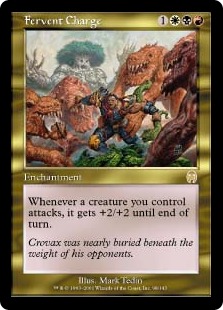

In
(3):
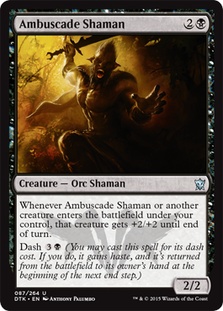
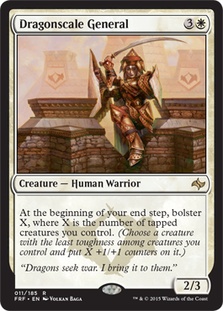
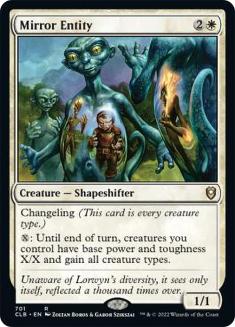

I’m a fan of force multipliers in aggro Commander decks. In anything that goes wide, an anthem is going to provide more bang for your buck than the
addition of another creature. But! When your only means of recurring an enchantment is Auramancer, it’s usually better to put those effects on a creature.
This is particularly true when, like Fervent Charge, the effect does not trigger for small creatures entering the battlefield off Alesha, Who Smiles at
Death’s ability. I make a minor exception for Ankle Shanker later in the build, both because the ability is worth the missed turn and because Ankle Shanker
is one of the best-named cards in ages. Ankle. Shanker.
It’s not “maybe baby,” but it’s close.
Ambuscade Shaman is not as well-named, although it did get me to look up ambuscade just to make sure that I knew what it meant. When the two meanings of
the word are respectively described as “dated” and “archaic,” I think it’s a little understandable to be less than certain you know what a word means.
Still, name aside, I really like how this card interacts with Alesha. Not only is it a creature with power greater than two that Alesha, Who Smiles at
Death can revive, but it also gives the boost to any other creature of yours that enters the battlefield. Not all of those bonuses will be relevant, but
enough of them will to make it worth running a creature in that slot.
Dragonscale General is interesting because it will trigger on the first turn it enters into the battlefield, usually for at least a bolster 2. It’s slower
than Fervent Charge, but I think it’s powerful how it can turn your weakest creature into a legitimate threat. Most anthems don’t do that since they mostly
only offer a two or three point bump spread over your whole team.
Finally, there’s Mirror Entity. I considered keeping in Xathrid Necromancer given the interaction, but the dimished density of Humans made me change my
mind. Plus, while it doesn’t go completely infinite, it certainly offers a significant potential for abuse. Mirror Entity is another recurrable anthem
effect, though, with the added benefit of often being threatening enough that you don’t have to spend the mana. If your opponent knows you blow them out if
they block and you tap out for the ability, they’re not going to block you. But if they don’t block you, you can leave your mana untapped, thus retaining
options during the final third of your turn.
Plague Rats
Out
(4):
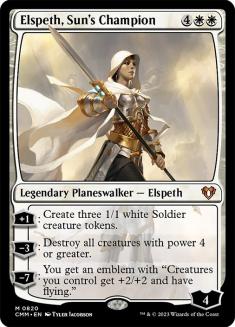
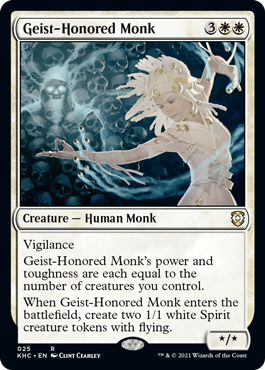
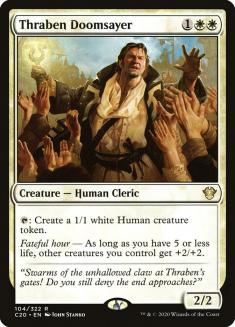
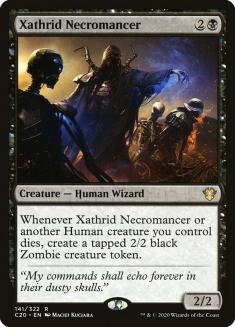

In
(5):
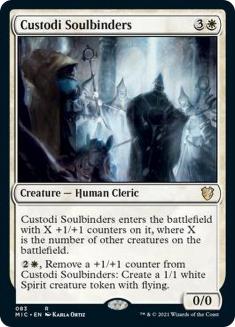
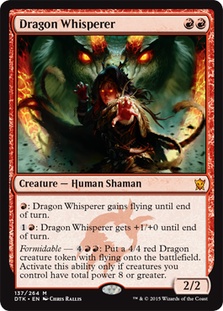
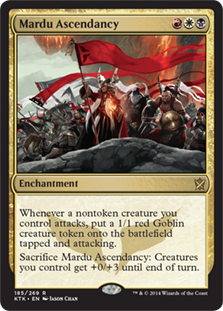

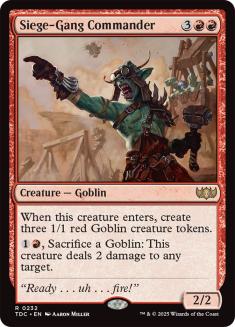

Given that I’ve mentioned it at least twice now, it’s probably time for me to discuss cutting Thraben Doomsayer and Xathrid Necromancer despite that being
a specific combo you mentioned in your letter, Aeryn. I cut this for a few reasons. First, I think both these cards are fairly weak on their own. Xathrid
Necromancer does not offer enough payoff to be worth building around, given that you can get similar effects from Teysa, Orzhov Scion or Requiem Angel…
only both of those cards have more ancillary value to a Commander deck since one has a relevant body and the other is tied to removal. Xathrid Necromancer
is just a Gray Ogre until a Human dies, and I’m not a huge fan of that.
Sure, Alesha, Who Smiles at Death is a Human, but how often is she going to actually die? In my experience, the answer is “never.”
Thraben Doomsayer is another card I’ve cooled on over the years. It’s just so slow. I mean, you were playing Elspeth, Sun’s Champion over Elspeth,
Knight-Errant. Part of that is because a single token a turn isn’t what it used to be. You want cards that can do more, and Thraben Doomsayer just can’t.
Add in how slow it is (a full turn cycle, barring something that gives haste), and the way it comes in tapped off an Alesha, Who Smiles at Death trigger,
and I think the card is underwhelming. Yes, it has a fateful hour anthem ability, but I don’t know that I’ve ever seen fateful hour triggered in Commander.
If you have a card like that, your opponents will usually know to keep you at six before they kill you.
I cut Elspeth, Sun’s Champion primarily because I was focusing on Alesha’s recursion, although I recognize there is synergy between her abilities and
Alesha’s power requirement. I suspect, however, that if you have any anthems in play (which is a state you should be planning for), that ability becomes a
lot less one-sided, at least in your favor. Instead, I brought in Mardu Ascendancy. Yes, it’s not a creature, but it’s a three-drop, which will prove
relevant, and it has both token generation abilities as well as a protection ability. The protection ability alone makes Alesha significantly harder to
block, and again it’s a situation where the threat often lets you avoid having to pop it.
Finally, there’s Geist-Honored Monk. Geist-Honored Monk, like my section titles, is a card that maintains its */* power and toughness in and out of the
graveyard. As such, it’s going to rarely be recurrable. Given the moderate-at-best strength of the card, I feel like that’s a dealbreaker. Instead, compare
it to Siege-Gang Commander, which is not only a token generator, but also works as removal (and can even auto-terminate if you want to recur it again).
On the other side of this */* divide is Pack Rat. Yes, Pack Rat is not going to be reliably recurrable with Alesha, Who Smiles at Death, but given the
relative dearth of Rats in the deck, that’s usually going to mean you have either two Pack Rat tokens on the battlefield or an active Mirror Entity, and
either way it seems like you’re winning. Plus, Pack Rat is a good way to drop creatures from your hand into the graveyard, allowing you to save mana on the
cards that cost more than five mana to play.
Custodi Soulbinders is super powerful. Unlike the */* cards, it’s a 0/0 in the graveyard, and thus can be brought back no matter what the boardstate. But
this one gets reliably huge! Furthermore, Custodi Soulbinders doesn’t care whether or not the creatures who set its power and toughness are token or
nontoken, which means you can peel off a bunch of Spirit tokens and then recycle it for an even bigger monster. Then just rinse and repeat! It’s not a
combo per se (although Cathars’ Crusade is pretty darn close), but it’s still a very strong interaction.
Finally, there’s Dragon Whisperer. The card isn’t amazing, but I think it’s a cute addition to the deck. You’re going to be triggering formidable a fair
amount of the time, and it’s a mana sink that makes tokens that are a) large, and b) fly. Since those are two weaknesses the deck has, it seems like this
is a pretty good way to patch the hole, on a 2/2 you can get back with Alesha, Who Smiles at Death.
Boneyard Wurm
Out
(1):
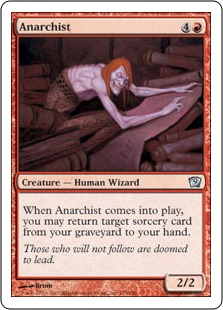

In
(5):
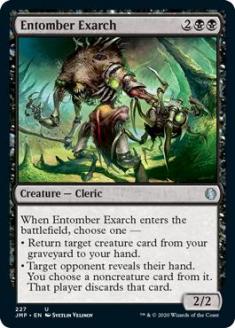
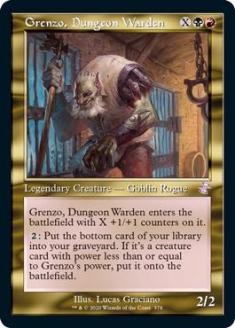
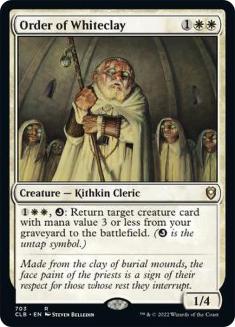
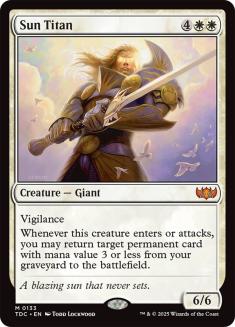
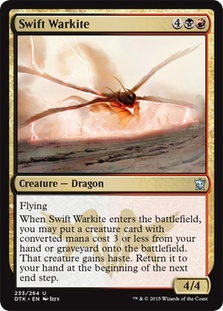

While the rules change on commander tucking have certainly reduced the need for effect redundancy in a commander-focused deck like Alesha, I still find it
valuable to have other sources of recursion when playing from the graveyard. At the very least, Alesha, Who Smiles at Death can only trigger once a turn;
adding one other recursion outlet to the board usually doubles your options.
I think it’s enlightening to compare Anarchist to Entomber Exarch. Anarchist can only do one thing, get sorceries back from the graveyard. After I was
done, you were down to about three targets. That means Anarchist is going to blank most of the time, without help. If someone should help, though, dropping
a Rest in Peace to try to turn your deck off, Anarchist remains useless. But Entomber Exarch has modes, and that second mode is always live. Plus, unlike
most targeted discard options, this one can hit lands. It’s pretty sweet.
Grenzo, Dungeon Warden is neat in this type of deck despite not precisely being a recursion engine. You can’t set him up, and you’ll probably only hit
about half the time, but all the things you hit will be things you could hit off Alesha, Who Smiles at Death. Without counters, Grenzo can animate anything
that Alesha could; when you add in power-boosting effects, the number of blanks drops precipitously.
Order of Whiteclay is another card with a relatively slow ability, but I like how it’s an untap ability. Since that’s an activated ability, you’re not
going to be able to use it turn 1 without some means of granting haste, but! Not only does the 1/4 body mean that it will survive most combats, but the
untap ability allows you to stay on defense while you keep swinging in.
Sun Titan is basically the gold standard of white-based recursion engines. It hits all permanents, it triggers on ETB and on attack, and it’s a 6/6 with
vigilance. It’s a perfect card, and I would definitely advise adding it into the mix. There’s a fair amount of overlap between “power two or less” and
“converted mana cost three or less.” For that reason, I also added in Swift Warkite. While you only get an ETB effect with that one, I like how it bounces
the reanimated creature to your hand at the end of the turn. The non-Ojutai uncommon dragon cycle in Dragons of Tarkir are all interesting cards for
Commander, and I only wish that the Elder Dragons had been nearly as good.
Beast of Burden
Out
(6):
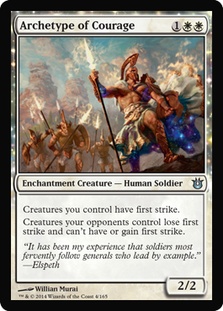
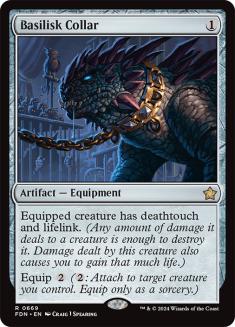
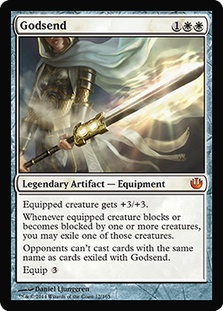

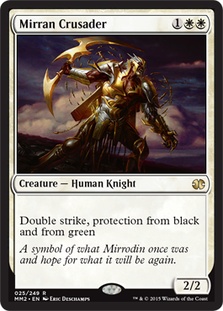


In
(4):
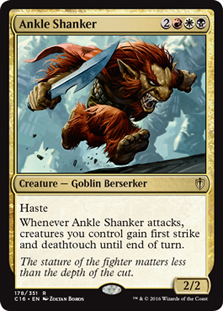
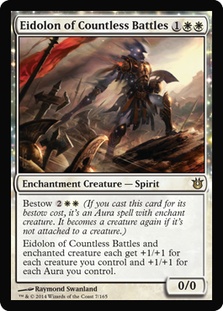
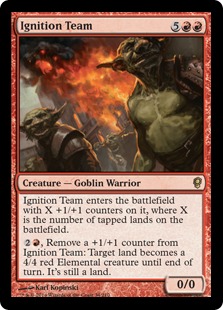
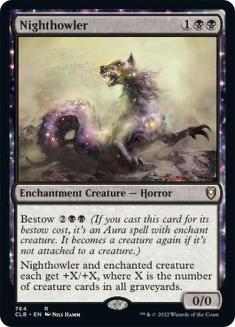

Godsend and Basilisk Collar got cut because I cut out most of the artifacts, particularly the equipment. They’re both there to keep your opponent from
successfully blocking Alesha, Who Smiles at Death, but I think they’re overkill, and I dislike how you can’t recur them.
Archetype of Courage was in a similar place, although it is at least recurrable. I just don’t love the Archetype cycle. They’re a bit too indiscriminate
for my tastes. There are times I want another player to keep their abilities because losing those abilities means that player will get run over. I’ll be
honest, this was a borderline case, but I needed to make room for two lands, so it ended up falling off the edge.
Mirran Crusader sees play in Commander from time to time (including in my tribal Humans deck), but I suspect its primary purpose in this deck was to be
anti-Omnath tech. I imagine it was great at that! As is, though, I don’t think it does enough to merit inclusion. Tajic, Blade of the Legion was in a
similar position for me. It doesn’t get its batallion trigger on its first attack, and I don’t love how other people are forced to respond to any
high-power indestructible creature.
Lim-Dul’s Paladin is fun, I guess, since it’s a way to get something bigger than two power off an Alesha, Who Smiles at Death trigger, but it’s not on the
same scale as the other ones I like. For example, Ignition Team rounds out the Conspiracy cycle. While the ability is weak on this one, it’s not useless…
you can use it aggressively as Wrath of God protection, and defensively to threaten blocks when you’re otherwise shields down. Really, though, you’re
playing it because it’s huge. It’s often at least a 20/20, assuming your opponents have been playing cards.
In Commander, that’s a safe assumption.
Nighthowler and Eidolon of Countless Battles are both in there because they’re huge, sure, but they’re also serving a similar role to Basilisk Collar and
Godsend, in creature form. Being able to bestow these cards onto Alesha will often bring her out of the danger zone, and even if they manage to knock them
off, you can still reanimate them as a gigantic beater.
But just in case you really wanted that “first strike and deathtouch” interaction, I brought in Ankle Shanker. Problem solved!
Aeon Chronicler
Out
(4):

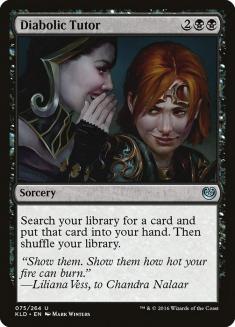

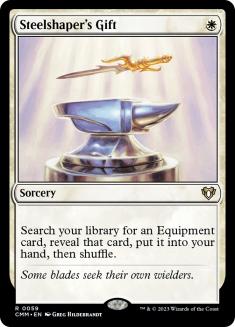

In
(5):
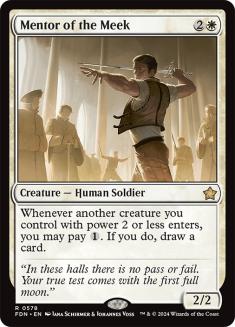
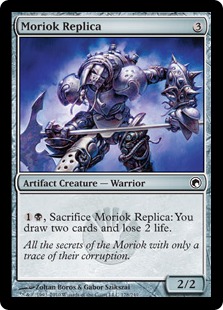
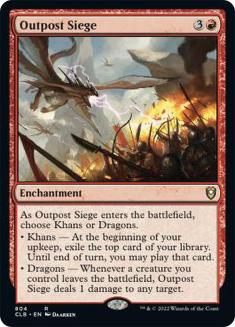
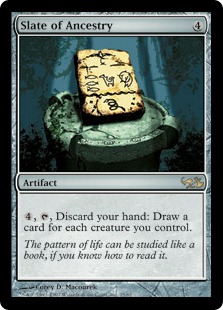
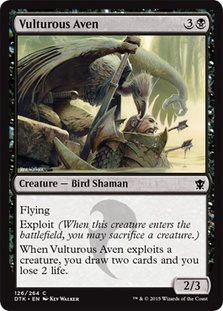

Mad Prophet came out because it taps. It’s a shame, as I like the looting potential, but things were getting tight and it recurs as a vanilla 2/2,
practically. But I’m a huge fan of drawing cards, and I’d rather draw cards than tutor any day of the week. Drawing cards serves to broaden the universe of
possible plays, while tutoring narrows them down to a set of “right” plays. You get to play with more of your deck the less you tutor, and I personally
love that.
Thus, I cut three tutors. Steelshaper’s Gift was obvious once I cut the equipment, and Beseech the Queen and Diabolic Tutor were just cut for their
middling rate. I left in a few of them, specifically Buried Alive and Increasing Ambition, but for both of them it was primarily because a) they work well
with the graveyard, and b) they’re not one-for-one cards. That helps cut against the possibility winnowing issue, although it’s still less than perfect.
Mentor of the Meek is a repeatable draw engine. It’s useless after you get an anthem effect, but it’s usually a good way to get there. Moriok Replica and
Vulturous Aven are both Sign in Bloods you can recur with Alesha, Who Smiles at Death. Moriok Replica has the added benefit of being an artifact creature,
while Vulturous Aven has evasion. Both benefits are minor but present.
Slate of Ancestry may be one of my favorite draw engines in this type of deck. Since dumping your hand is often beneficial in a graveyard deck and since
you should always have at least three or four creatures on the battlefield, it helps keep you fueled on both ends.
Finally, there’s Outpost Siege. I love the Siege cycle since modal cards let you cram two or more cards worth of effect into a single slot. Here, Outpost
Siege works both as a draw engine in the earlygame and as a damage source in the endgame.
Lord of Extinction
Out
(6):
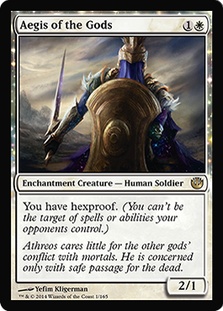
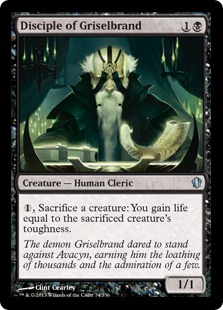
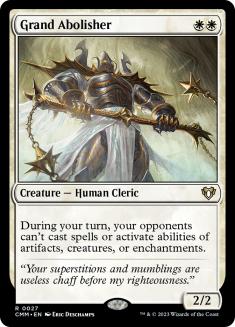
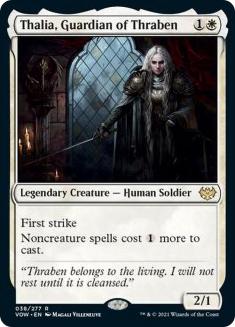
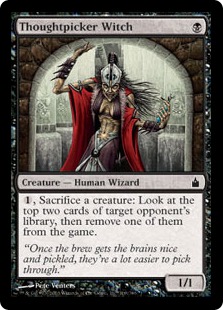
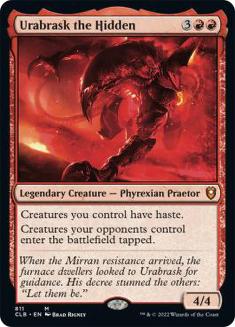

In
(2):

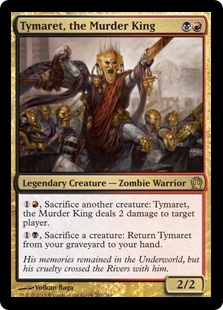

I’m not the biggest fan of purely defensive cards in Commander, absent a specific thing or strategy to be protecting. That’s why I cut Aegis of the Gods
(not a ton of player targeting goes on in my meta) and Grand Abolisher (I like my opponents doing things). My meta is a bit friendlier than most, but in
general, these cards don’t seem worth their slots.
Urabrask the Hidden is a strong card that fell on the edge, but since there was a fairly obvious replacement (Anger), it seemed like it was worth cutting
it. Anger is good, although it brings up the issue of basic lands again (somewhat ameliorated by the use of the shocklands).
When it comes to sac engines, I’m not a huge fan of Disciple of Griselbrand, and I really dislike Thoughtpicker Witch. Instead, consider running Tymaret,
the Murder King, who offers utility whether alive or dead, and who can be reanimated by Alesha, Who Smiles at Death in a pinch.
Creatures (45)
- 1 Solemn Simulacrum
- 1 Avalanche Riders
- 1 Nekrataal
- 1 Anger
- 1 Weathered Wayfarer
- 1 Siege-Gang Commander
- 1 Bone Shredder
- 1 Wall of Blood
- 1 Auramancer
- 1 Magus of the Tabernacle
- 1 Necrotic Sliver
- 1 Mirror Entity
- 1 Murderous Redcap
- 1 Order of Whiteclay
- 1 Sun Titan
- 1 War Priest of Thune
- 1 Manic Vandal
- 1 Moriok Replica
- 1 Entomber Exarch
- 1 Mentor of the Meek
- 1 Fiend Hunter
- 1 Champion of the Parish
- 1 Silverblade Paladin
- 1 Disciple of Bolas
- 1 Pack Rat
- 1 Purphoros, God of the Forge
- 1 Nighthowler
- 1 Tymaret, the Murder King
- 1 Burnished Hart
- 1 Eidolon of Countless Battles
- 1 Agent of Erebos
- 1 Grenzo, Dungeon Warden
- 1 Drakestown Forgotten
- 1 Custodi Soulbinders
- 1 Ignition Team
- 1 Ankle Shanker
- 1 Feldon of the Third Path
- 1 Flesh Carver
- 1 Dragonscale General
- 1 Alesha, Who Smiles at Death
- 1 Swift Warkite
- 1 Dragon Whisperer
- 1 Ambuscade Shaman
- 1 Vulturous Aven
- 1 Minister of Pain
Lands (37)
- 3 Plains
- 1 Reflecting Pool
- 2 Swamp
- 3 Mountain
- 1 Phyrexian Tower
- 1 Boros Garrison
- 1 Sacred Foundry
- 1 Godless Shrine
- 1 Orzhov Basilica
- 1 Blood Crypt
- 1 Rakdos Carnarium
- 1 Kher Keep
- 1 Urborg, Tomb of Yawgmoth
- 1 Dragonskull Summit
- 1 Lavaclaw Reaches
- 1 Command Tower
- 1 Homeward Path
- 1 Isolated Chapel
- 1 Clifftop Retreat
- 1 Rakdos Guildgate
- 1 Rogue's Passage
- 1 Boros Guildgate
- 1 Orzhov Guildgate
- 1 Temple of Silence
- 1 Temple of Triumph
- 1 Opal Palace
- 1 Temple of Malice
- 1 Nomad Outpost
- 1 Wind-Scarred Crag
- 1 Scoured Barrens
- 1 Bloodfell Caves
- 1 Arcane Lighthouse
Spells (18)

As you can see, I’ve added a net ten creatures to bring the total up to 45 cards. It’s not quite half, but that’s still a reasonable creature count for a
deck like this. I kept in Flesh Carver and Rite of Consumption, but this version’s more likely to win through alternate means than the specific combo of
Rite of Consumption and something huge. Still, the addition of the Conspiracy creatures and the other deceptively huge cards means you’re more likely to be
able to just fire your Rite of Consumption off for twenty-plus points, even without a specific combo.
For price, I kept it reasonable. If you’re looking to splurge, Eldrazi Monument is a $10 way to survive Wrath of God, but if I were to add that I would
want to add in Treasure Hunter, and Treasure Hunter means Altar of Dementia for the self-mill, and the next thing you know you’re looping the
Reveillark/Karmic Guide or Fiend Hunter/Angel of Glory’s Rise combos, and that’s not really an aggro thing to do. Feel free to go as far down that path as
you’d like, it’s just a very different style of Alesha, Who Smiles at Death deck.
|
Card |
Price |
|
0.15 |
|
|
0.15 |
|
|
0.15 |
|
|
0.15 |
|
|
0.15 |
|
|
0.25 |
|
|
0.25 |
|
|
0.25 |
|
|
0.25 |
|
|
0.29 |
|
|
0.35 |
|
|
0.39 |
|
|
0.49 |
|
|
0.49 |
|
|
0.49 |
|
|
0.49 |
|
|
0.49 |
|
|
0.49 |
|
|
Tymaret, The Murder King |
0.49 |
|
0.49 |
|
|
0.59 |
|
|
0.69 |
|
|
0.75 |
|
|
1.45 |
|
|
1.59 |
|
|
1.59 |
|
|
1.75 |
|
|
1.85 |
|
|
1.89 |
|
|
2.65 |
|
|
2.99 |
|
|
4.19 |
|
|
4.55 |
|
|
5.55 |
|
|
7.25 |
|
|
7.69 |
|
|
Total |
53.72 |
As you can see, total comes to just below $54. Since all submissions chosen for Dear Azami grant the submitter a $20 credit to Star City Games, that brings
the price down to more like $40, which is more than reasonable.
Thanks for the experience, Aeryn! I always love playing around with Alesha, Who Smiles at Death, and being able to do a Dear Azami about her really
scratched my itch. I hope you like what I did with the deck, and until next time, may you always draw a land when you need it (and never when you don’t).
#BlessingForMagicPlayers
Want to submit a deck for consideration to Dear Azami? We’re always accepting deck submissions to consider for use in a future article. Only one deck
submission will be chosen per article, but being selected for the next edition of Dear Azami includes not just deck advice but also a $20 coupon to
StarCityGames.com!
Email us a deck submission using [email protected]?subject=Dear Azami Deck Submission”>this link here!
Like what you’ve seen? Feel free to explore more of Dear Azami here, in the Article Archives!
And feel free to check Jess’s own Command of Etiquette
column on Hipsters of the Coast, for more Commander and casual content. Now on Thursdays!
